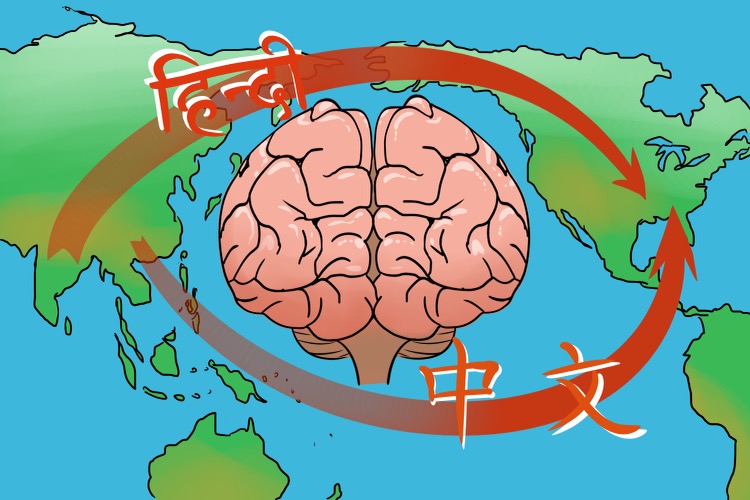By Umar Samdani, Co-Managing Editor
1.3 billion people in the world speak Mandarin Chinese.
1.3 billion. That’s one-seventh of the world population — 200 million more than the number of Spanish and French speakers combined. And considering our nation’s on/off relationship with Chinese diplomats, knowing the language now has even more practical applications.
But let’s not stop there: over 400 million people speak Hindi. Bollywood, India’s film industry, is one of the world’s largest entertainment divisions. In the political field, India’s prime ministers — ruling over nearly 1.4 billion people — have forged groundbreaking relations with U.S Presidents.
That’s nearly 2 billion speakers, and countless real-world connections. Despite this potential, there’s not a single class devoted to either of these languages at Conestoga.
There’s no doubting the notion that bilingualism has its benefits. Students proficient in multiple languages demonstrate proficiencies in multitasking, making inferences, and communicating ideas. Educators have been aware of these cognitive benefits for years, and react accordingly. In practically every public high school in the United States, students study Spanish or French — two geographic and (seemingly) culturally relevant tongues.
However, what educators don’t realize is that Spanish and French only activate certain parts of the developing brain. According to a study from the U.S Library of Medicine, studying romantic languages exclusively activates the left, logic-driven side of the brain. The similarities between the dialects prevent the human mind from making deeper, more creative connections.
With a more intricate, tone-driven language like Chinese, the brain works much harder to engage in thoughtful conversation. An entirely new form of writing, reading, and speaking can allow students to stimulate their right, artistic portion of the mind. Hindi, with its various derivatives and unique grammar structure, is no different. Students would be forced to truly immerse themselves into the language — instead of falling back to more straightforward English connections.
But don’t art and music classes provide similar cognitive benefits? Why waste effort and money creating a new curriculum when German, a non-romantic language, is already offered?
These qualms overlook an essential element of any language class: teaching the distinctive, vibrant culture. Equally as important as learning the language of a nation is comprehending the daily lifestyle of its citizens. It’s time to open students’ eyes to the songs, dances, and food of the Eastern hemisphere. Let’s spend a day watching “Dilwale Dulhania Le Jayenge,” a film released in 1995 that still plays in Indian theaters today. Or maybe, we can play Mahjong, a traditional game once banned by the People’s Republic of China.
It’s time for Conestoga to open its doors to a lesser-known half of the world. Even if we don’t reach the stages of a complete, detailed course, we can start by acknowledging that we all need a little more nihao and namaste in our lives.
Umar Samdani can be reached at [email protected].





















































































